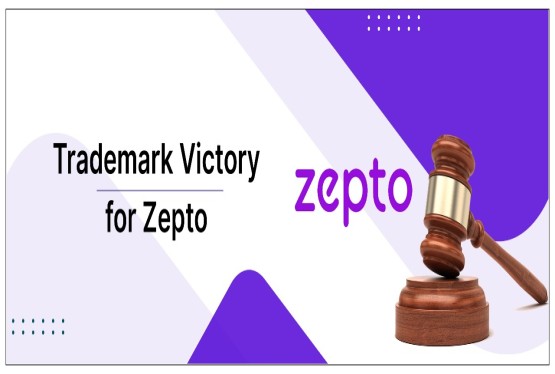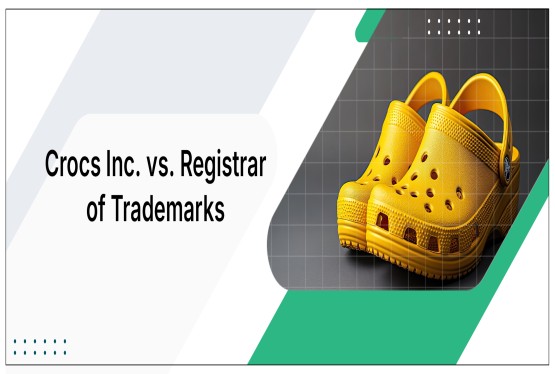In India’s marketplace, brand recognition is a important asset for businesses, impacting both trademark registration and the handling of trademark infringement disputes. "Well-known trademarks," enjoying broad public recognition, receive enhanced protection under the Trade Marks Act, 1999, to prevent their dilution and misuse, which can be particularly relevant in trademark infringement cases. Rule 124 of the Trade Marks Rules, 2017, provides a structured administrative pathway for trademark owners to secure this prestigious status for their brands, impacting both the strength of their trademark registration and their ability to combat infringement.
This article explores the intricacies of Rule 124, outlining the procedure, legal criteria, and practical considerations involved in applying for well-known trademark recognition, and how this recognition plays a vital role in both successful trademark registration and effective action against trademark infringement. By examining real-world examples and comparing Indian practices with international standards, we aim to offer a comprehensive understanding of this important legal tool for brand protection. Furthermore, we will address the advantages, challenges, and best practices associated with filing applications under Rule 124.
Well-Known Trademarks
A "well-known trademark" is defined under Section 2(1)(zg) of the Trade Marks Act, 1999, as a mark that has gained recognition among a substantial segment of the public due to its association with specific goods or services. Such trademarks enjoy protection across all classes, irrespective of their registration or use in a particular class.
The rationale for protecting well-known trademarks is rooted in the principle of preventing dilution, misrepresentation, and unfair advantage by third parties. Their protection extends beyond the conventional parameters of similarity and likelihood of confusion.
Statutory Basis: Rule 124 of the Trade Marks Rules, 2017
Rule 124 provides a streamlined procedure for proprietors to request the inclusion of their trademark in the list of well-known marks maintained by the Registrar of Trademarks. The provision reads as follows:
"A request for inclusion of a trademark in the list of well-known trademarks shall be made in Form TM-M along with the prescribed fee, supported by a statement of case and evidence."
This rule allows proprietors to directly approach the Registrar to recognize their mark as well-known without relying on judicial declarations or extensive litigation.
Procedure for Filing a Request under Rule 124
The process of requesting inclusion as a well-known mark involves the following steps:
1. Application in Form TM-M: The proprietor must file an application in Form TM-M and pay the prescribed fee as mentioned in the First Schedule of the Trade Marks Rules, 2017. As of now, the fee is INR 1,00,000.
2. Submission of a Statement of Case: The applicant must provide a detailed statement of the case, outlining why the mark qualifies as well-known. The statement must include the history of the mark, its reputation, and the extent of its use.
3. Evidence Supporting the Claim: The evidence must substantiate the claim that the mark is well-known. Relevant documents may include:
-
Evidence of use of the trademark (duration, extent, and geographical area).
-
Details of trademark registrations in India and abroad.
-
Annual sales and advertising expenditures.
-
Consumer surveys indicating recognition of the mark.
-
Court or tribunal orders declaring the mark well-known.
4. Examination by the Registrar: The Registrar evaluates the application based on the submitted evidence and ensures compliance with statutory requirements.
5. Inclusion in the List: If the Registrar is satisfied, the trademark is added to the list of well-known trademarks published on the website of the Trade Marks Registry.
Legal and Procedural Criteria
Section 11(6) of the Trade Marks Act, 1999, outlines the factors the Registrar must consider while determining whether a mark is well-known:
1. Knowledge of the Mark: The degree of knowledge or recognition of the mark in the relevant section of the public.
2. Duration and Extent of Use: The length of time the trademark has been used and its geographical spread.
3. Extent of Promotion: The efforts made by the proprietor to promote the mark, including advertisements and media coverage.
4. Record of Enforcement: Success in enforcing the rights associated with the mark, such as restraining unauthorized use.
5. Recognition in Judicial or Administrative Proceedings: Whether the mark has been recognized as well-known in any court or administrative order.
Practical Examples
Example 1: Coca-Cola
The trademark "Coca-Cola" has been recognized as a well-known mark globally due to its extensive use, significant advertising expenditure, and widespread consumer recognition. An application under Rule 124 could include evidence of the brand's global and Indian sales figures, market surveys, and prior judicial acknowledgment.
Example 2: Amul
The Indian dairy cooperative "Amul" could qualify as a well-known mark based on its decades-long association with dairy products, extensive advertising campaigns, and consumer surveys establishing its recognition across India.
Advantages of Rule 124
1. Administrative Efficiency: By allowing proprietors to approach the Registrar directly, Rule 124 streamlines the process of recognizing well-known trademarks.
2. Cost-Effectiveness: Compared to judicial proceedings, the administrative route is quicker and more cost-efficient.
3. Legal Certainty: Inclusion in the list of well-known trademarks provides definitive recognition, simplifying future enforcement actions.
Challenges and Limitations
1. High Filing Fee: The fee of INR 1,00,000 may deter smaller businesses from seeking recognition.
2. Registrar's Discretion: The Registrar’s subjective evaluation of evidence can lead to inconsistent outcomes.
3. Burden of Proof: The requirement to produce extensive evidence can be resource-intensive for applicants.
International Comparison
India’s approach to well-known trademarks aligns with international practices under Article 6bis of the Paris Convention and Article 16(2) of the TRIPS Agreement. Similar mechanisms exist in other jurisdictions, such as the United States Patent and Trademark Office (USPTO), which allows for administrative recognition of famous marks.
Best Practices for Filing Under Rule 124
1. Documentation: Ensure that the evidence submitted is exhaustive and supports every aspect of the claim.
2. Consumer Surveys: Commission professional surveys to establish the recognition of the mark among the public.
3. Global Registrations: Include evidence of trademark registrations and enforcement in foreign jurisdictions.
4. Strategic Filing: File under Rule 124 when the mark has achieved significant recognition to ensure a strong case.
Conclusion
Rule 124 of the Trade Marks Rules, 2017, provides a critical mechanism for proprietors to secure recognition of their marks as well-known trademarks. This recognition not only strengthens the legal protection afforded to the mark but also enhances its brand value and market position.
By adhering to the statutory requirements and providing compelling evidence, proprietors can leverage Rule 124 to safeguard their intellectual property rights. As demonstrated by judicial precedents and practical examples, well-known trademarks play a vital role in promoting fair competition and preventing brand dilution. Legal practitioners must understand the nuances of Rule 124 to effectively navigate the procedural and evidentiary requirements for their clients.
FAQs
Q1. What is a "well-known trademark" and why is it important?
Ans. A well-known trademark is a mark recognized by a substantial segment of the public due to its association with specific goods or services. It receives enhanced protection across all classes, regardless of registration or use in a particular class, preventing dilution and unfair advantage by others, especially in trademark infringement cases.
Q2. What is Rule 124 of the Trade Marks Rules, 2017, and how does it relate to well-known trademarks?
Ans. Rule 124 provides a streamlined procedure for trademark owners to request that their mark be included in the official list of well-known trademarks maintained by the Registrar. This administrative process offers a more efficient alternative to relying solely on judicial declarations.
Q3. What are the key steps involved in filing a request under Rule 124?
Ans. The process includes filing an application in Form TM-M with the prescribed fee, submitting a detailed statement of case explaining why the mark qualifies as well-known, providing supporting evidence (like sales figures, advertising expenditures, and consumer surveys), and undergoing examination by the Registrar. If approved, the mark is then included in the list.
Q4. What criteria does the Registrar consider when determining whether a mark is well-known?
Ans. The Registrar considers several factors outlined in Section 11(6) of the Trade Marks Act, 1999, including the public's knowledge of the mark, the duration and extent of its use, the extent of promotion, the record of enforcement actions, and any prior recognition in judicial or administrative proceedings.
Q5. What are the advantages and challenges associated with using Rule 124?
Ans. Advantages include administrative efficiency, cost-effectiveness compared to litigation, and legal certainty. However, challenges include the high filing fee, the Registrar's discretionary power in evaluating evidence, and the burden of proving well-known status through extensive documentation.






























_(b)_of_the_Trademark_Act,_1999_(1)_crop10_thumb.jpg)



_crop10_thumb.jpg)




























_crop10_thumb.jpg)
_crop10_thumb.jpg)






_crop10_thumb.jpg)








_crop10_thumb.jpg)
_crop10_thumb.jpg)



_crop10_thumb.jpg)





























_crop10_thumb.jpg)

















_crop10_thumb.jpg)






_crop10_thumb.jpg)












































































































































_crop10_thumb.jpg)



































_crop10_thumb.jpg)












_crop10_thumb.jpg)






















